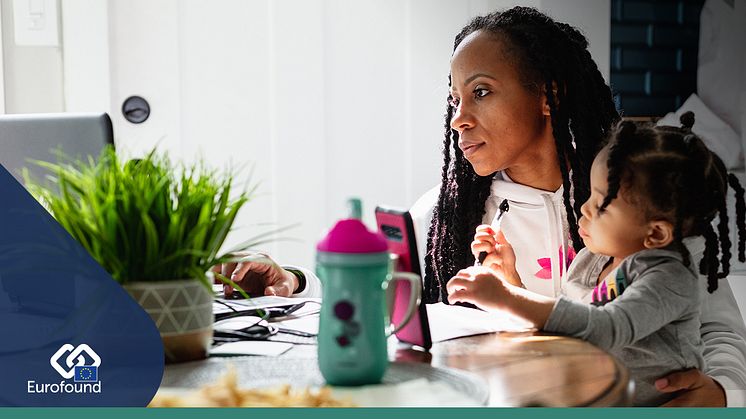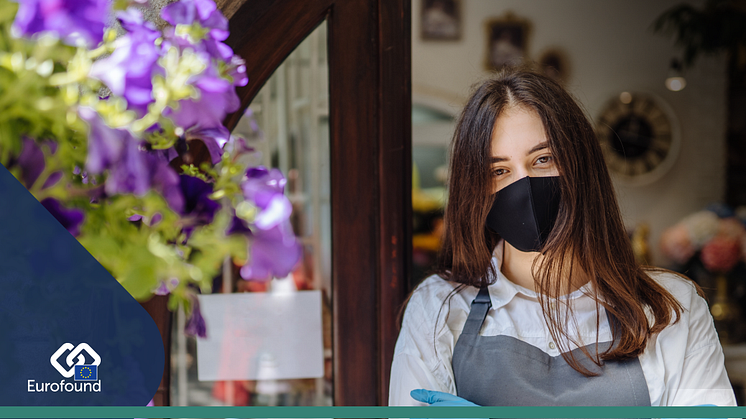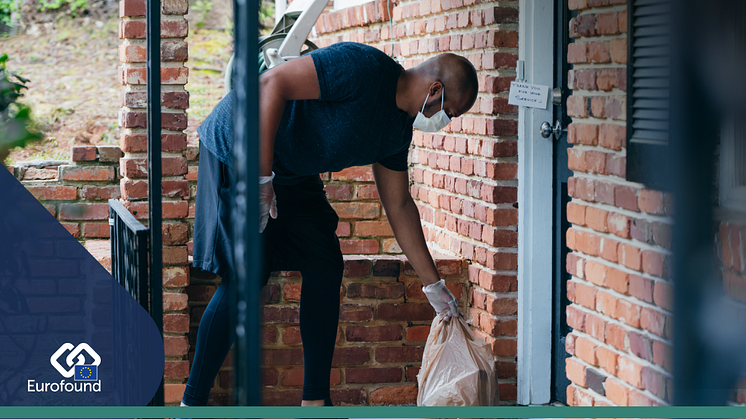
Blog post -
Choosing to challenge – the EU Gender Equality Strategy one year in
This year’s theme to mark International Women’s Day on 8 March is Choose to Challenge (or #ChooseToChallenge, if you prefer). The idea is to highlight that ‘from challenge comes change’ and that ‘we can all choose to challenge and call out gender bias and inequality’.
Challenging the status quo in early 2020, the European Commission published its Gender Equality Strategy 2020–2025, presenting policy objectives and actions to make significant progress by 2025 towards a gender-equal Europe.
Since then, the world has experienced a pandemic that has had an impact on just about every aspect of everyday life. The health crisis quickly turned into a social and economic crisis, with women, youth and vulnerable groups bearing the brunt of the measures aimed at containing the spread of the virus. For women, there is a real threat that past achievements in gender equality are becoming undone, particularly with regard to expanding female labour market participation and the more equal distribution of household work between male and female partners.
So, this year’s International Women’s Day marks a critical juncture for the EU. The choices we make today will shape the context for gender equality for generations to come; they are the choices that will make all the difference. #ChooseToChallenge.
Challenging the employment gap
One of the key priorities of the Gender Equality Strategy is closing the gender employment gap. In 2019, more women than ever before were in employment (67% of those of working age, compared to 78% of the equivalent group of men). However, this gap, which was narrowing, albeit slowly, has stagnated at around 12 percentage points since 2014 (11.7 percentage points in 2019). Moreover, most sectors and occupations continue to be dominated by one gender or the other, and women more commonly hold down part-time, temporary, low-paid and precarious jobs. The segregated nature of the EU labour market has come into the spotlight during the COVID-19 crisis because the business shutdowns are disproportionately affecting minimum wage and low-paying service sectors that involve a high level of social contact, many of which employ mostly female workers. As the right-hand panel of Figure 1 shows, the sharpest reduction in employment during the current crisis has been among the lowest-paid female workers.
Figure 1: Employment shifts (in thousands), by gender and job–wage quintile: Comparing the global financial crisis and the first phase of the COVID-19 crisis, EU27

For many people, having a job is not only about earning a living but also about achieving personal aspirations, having freedom of choice and feeling part of society. Women’s labour market participation also has an economic dimension: their exclusion from the labour market has been calculated to cost the EU €320 billion annually.
Challenging traditional gender roles
The Gender Equality Strategy also points out the imbalance in responsibility for unpaid care and domestic work, 75% of which is carried out by women. Eurofound’s 2016 European Quality of Life Survey found that whereas women spent 39 hours a week taking care of children, men spent 21 hours. As for cooking and housework, women clocked up an average of 17 hours a week compared to 10 hours for men.
The COVID-19 pandemic has exacerbated this inequality. Lockdowns compelled millions of European workers to work from home, sparking a ‘telework revolution’. Women’s jobs have been found to be more ‘teleworkable’ than men’s, and 39% of women compared to 35% of men found themselves teleworking during the pandemic.
But this has been challenging for people with children because of the widespread closures of schools and creches at the same time, and women in particular have struggled to balance work demands with demands at home. Large differences exist between women and men with young children under 12 in the experience of work–conflicts (Figure 2). Women found it more difficult than men to concentrate on their job because of family responsibilities (29% vs 11%, respectively), and they indicated more often than men that family prevented them from giving time to the job (26% vs 7%, respectively).
Figure 2: Percentage of women and men with young children experiencing work–life conflicts, EU27, July 2020

These discrepancies could be explained by the hours spent on housework and childcare, which even during the pandemic continues to be carried out predominantly by women. In July 2020, women with children aged under 12 in the household spent an average of 62 hours per week on childcare (compared to 36 hours for men) and 23 hours per week doing housework (compared to 15 hours for men).
The Gender Equality Strategy identifies policy actions to achieve a fairer distribution of care responsibilities, such as ensuring that the provisions of the Work–Life Balance Directive are adhered to, promoting equal uptake of family leave and flexible working arrangements, investing in care services, and adopting the Child Guarantee (recommendations set to be published on 24 March).
Challenging the pay gap
Addressing the gender pay gap and introducing binding measures on pay transparency are also high on the list of priorities. Eurostat calculates that women's gross hourly earnings were on average 14.1% below those of men in the EU in 2019. It also finds that while the gender pay gap is generally much lower for entry-level workers, the gap tends to widen with age, which might in part be explained by the career interruptions women experience during their working lives.
The Commission Recommendation on pay transparency of 2014 has to date been followed only partially and slowly by Member States. Hence, on 4 March, the Commission presented a proposal for binding measures. This includes several elements, such as pay information for job-seekers, a right to know the pay levels of workers doing work of equal value, as well as gender pay gap reporting obligations for big companies – all with the aim to ensure equal pay for equal work.
Bigger companies (250+ employees) will be required to carry out public and internal reporting on their pay structures and differences in pay. This chimes with findings from Eurofound’s research indicating that companies’ pay reports and audits are more meaningful when they provide richer information allowing for more in-depth analysis.
National governments are crucial actors in this endeavour. Once the Commission proposal is adopted by both the European Parliament and the Council, countries will have two years to transpose the Directive into their national law.
Challenges ahead
It has been one year since the publication of the EU’s Gender Equality Strategy, a year in which COVID-19 wreaked havoc across the globe and in the day-to-day lives of all Europeans. Progress that had been made over several years is now in danger of being reversed. The consequences of decreased female labour market participation, unsustainable work–life conflicts, and the persistent unequal sharing of childcare could have long-term damaging effects for gender equality if not addressed. Policymakers at all levels must #ChooseToChallenge.
Further information







